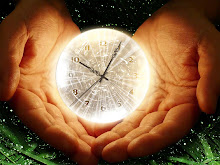
The truth of St. Patricks Day lies in history. The story of St Patrick driving out the snakes is symbolisim of him ridding Ireland of jewish and pagan practices.
The legend of Saint Patrick driving the snakes out of Ireland may be nothing more than misreading of an ancient text.
According to Irish lore, Saint Patrick scattered the serpents and drove them into the sea, though most naturalists are convinced that larger reptiles were never part of our fauna.
Now it's emerged that the myth may have come about because of a too-literal translation of an ancient sixth century text called the Dinnshenchas.
The text carries an account of a sect called the Crom Cruich, who used the symbolism of the snake.
In time, Crom Cruich eventually became a powerful force in Ireland, whose followers used the snake as their symbol. And herein may lie the real story about Saint Patrick driving out the snakes
"Crom Cruich which literally means bloody crescent, was a pagan site of worship near the village of Ballymagauran in County Cavan. It's exact location was in the plain of Mag Sleact, which translates into the field of adoration. At its entrance was a large megalithic standing stone which was surrounded by 12 smaller upright lintels. So in a sense it looked like Stonehenge in England."
"The Crom Cruich cult were very bloodthirsty with the faithful expected to sacrifice their first born in his honour to assure a successful harvest. The annual slaughter took place on the pagan feast of Samhain, on November 1, each year," explains historian, Thomais Moriarty, who specialises in pre-Christian Ireland.
"By all accounts, a major battle took place, but Patrick and his well-armed followers won the day.
"The people feared terrible retribution from the pagan god afterwards, but it never came to pass, and from that point onwards, the cult's grip was effectively broken in Ireland for all time. The event is recorded in the 6th century Dinnshenchas text, otherwise known as the Book of Leinster," adds Thomais Moriarty.
JEWISH RITUAL MURDER
Baal Worship
"In his sermon, Pastor Mabray illustrated that, although they've now assumed a more contemporary flair, the fundamentals of Baal worship remain alive and well today. The principal pillars of Baalism were child sacrifice, sexual immorality (both heterosexual and homosexual) and pantheism (reverence of creation over the Creator).Ritualistic Baal worship, in sum, looked a little like this: Adults would gather around the altar of Baal. Infants would then be burned alive as a sacrificial offering to the deity. Amid horrific screams and the stench of charred human flesh, congregants – men and women alike – would engage in bisexual orgies. The ritual of convenience was intended to produce economic prosperity by prompting Baal to bring rain for the fertility of "mother earth."
Jer 19:5 and they have built altars for Baal in order to burn their children in the fire as sacrifices. I never commanded them to do this; it never even entered my mind.
Mat 23:33 You snakes, offspring of snakes, how will you be kept from the punishment of hell?
Strongs Definition of "Snake":
G3789
ophisof'-is
Probably from G3700 (through the idea of sharpness of vision); a snake, figuratively (as a type of sly cunning) an artful malicious person, especially Satan: - serpent.
ophisof'-is
Probably from G3700 (through the idea of sharpness of vision); a snake, figuratively (as a type of sly cunning) an artful malicious person, especially Satan: - serpent.
So it would appear that what St. Patrick ran "out of town" were Baal worshippers, which has its origins with the Canaanites, (jews/snakes).


1 comment:
I'm embarrassed to admit I didn't know this, and hadn't thought of the possibility of the symbolism of the story. But then again I'm not Irish and don't celebrate St. Patrick's day, so I hadn't thought about the history or the story behind the legend.
Thanks for posting.
Post a Comment